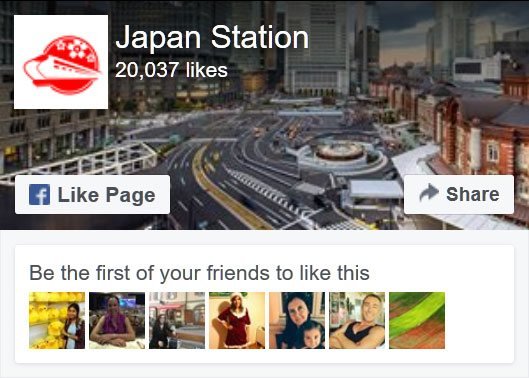The Hikawa Maru is a museum ship which is permanently docked beside Yamashita Park in Yokohama. Built in 1929, this luxury ocean liner carried passengers across the Pacific Ocean in fine style, gaining a reputation for elegant service and gourmet cuisine that earned it the title “Queen of the Pacific”. Among the ship’s more prominent passengers were Charles Chaplin in 1932 and their Imperial Highnesses Prince and Princess Chichibu in 1937.
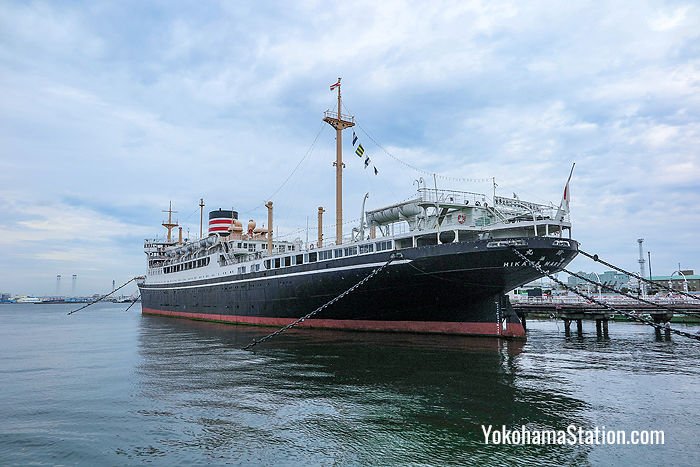
The Hikawa Maru – Yokohama’s Historic Museum Ship
Today you can view the restored passenger quarters which are notable for their art deco interiors and imagine what it was like to travel across the sea almost a century ago. This is the only surviving cargo-passenger liner that was built in Japan before World War II and is now a nationally designated Important Cultural Property.
History
Built as an ocean liner of the N.Y.K. Line (Nippon Yusen Kaisha or “Japan Shipping Company”) the Hikawa Maru was first launched in September 1929 and made her maiden voyage from Kobe to Seattle in May 1930. After that the ship ran a regular route between Yokohama and Seattle, making 73 voyages before the outbreak of the Pacific War in 1941.
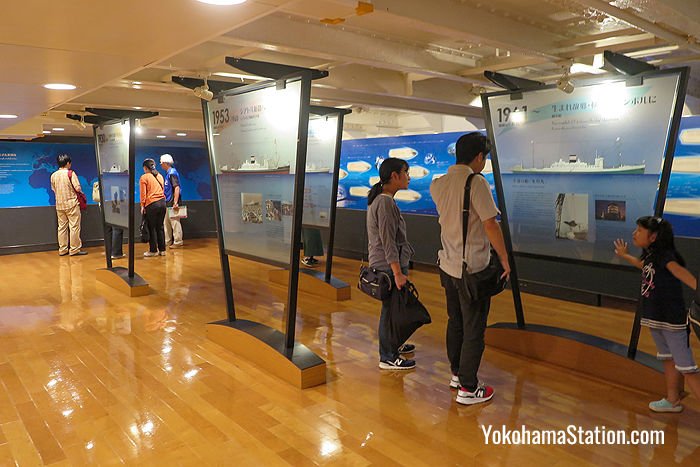
An exhibition area on board the ship traces Hikawa Maru’s many voyages
In 1941 she was converted into a hospital ship for use by the Japanese Navy in World War 2. During this time she was damaged by mines on three occasions, but thanks to her thick steel plating she did not sink. In fact, the Hikawa Maru was one of only two large Japanese passenger ships that survived the war. After the war she was used for 2 years to bring Japanese troops and civilians home to Japan and then for another 6 years as a cargo ship. It was not until 1953 that she resumed service transporting passengers and cargo between Japan and Seattle. Finally retired in 1960, the Hikawa Maru had crossed the Pacific 254 times and carried a total of 25,000 passengers over a 30 year period.
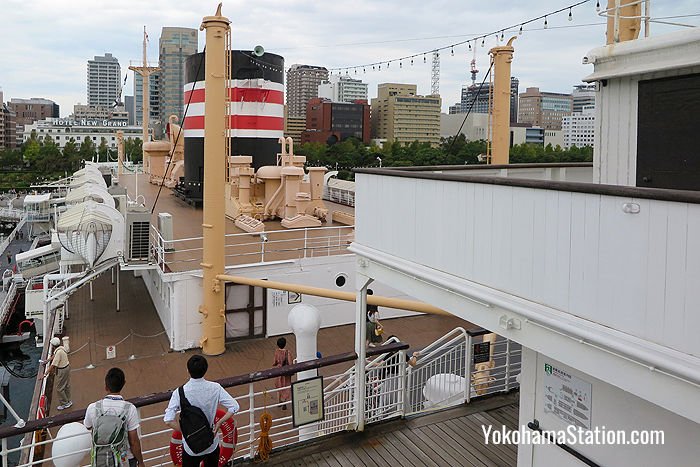
A view of the upper decks
Inside the Ship
Once aboard the ship visitors are free to take a self-guided tour of the ships four interior decks and three upper levels. In the entrance lobby is a video presentation on the history of the Hikawa Maru.
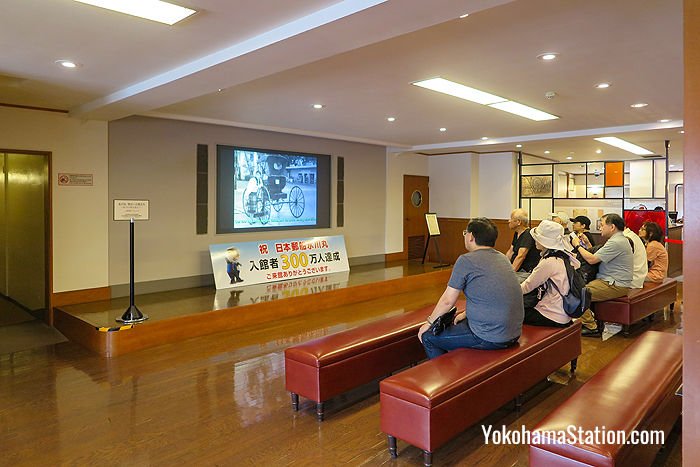
The entrance lobby
Beyond that you will soon find yourself exploring the first class passenger quarters.
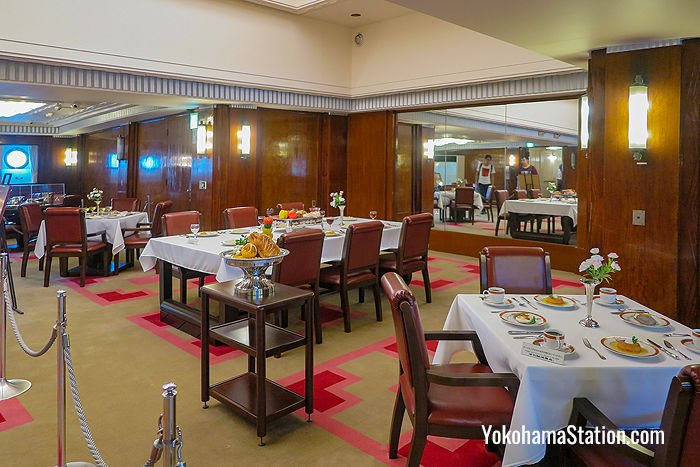
The first class dining saloon
In 1930 a first class ticket on the Hikawa Maru from Yokohama to Seattle would have cost 500 yen. In those days, that was a lot of money as it would cost 1,000 yen to build a house.
First class passengers had access to smoking lounges and social halls and were entertained with deck billiards, bingo, films, stage shows, and dance parties.
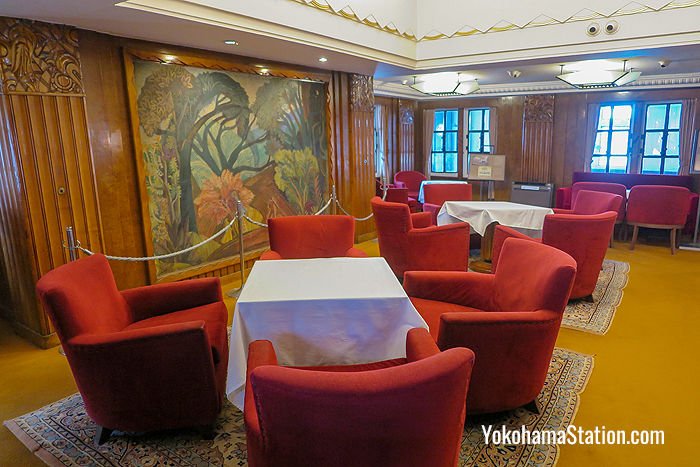
The first class lounge
The daily meal schedule for first class passengers is impressive. At 6.00 am they would receive morning coffee and toast in bed, followed by a full breakfast at 8.00, soup at 11.00, lunch at 12.00, afternoon tea at 15.00, a multi-course dinner at 19.00, and a late-night snack at 23.00.
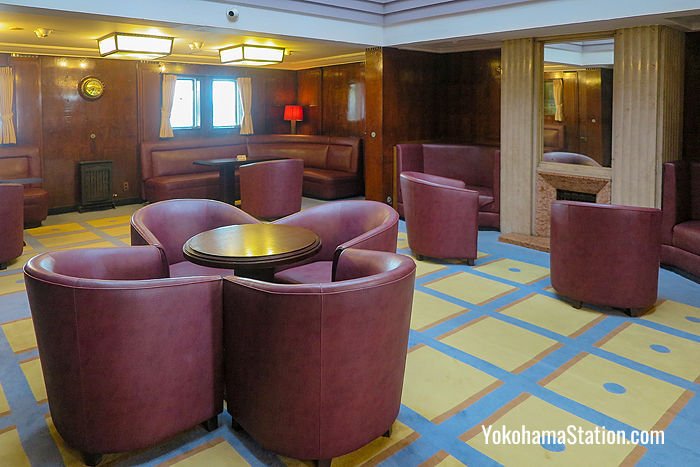
The first class smoking room
In the smoking room gentlemen played card games while enjoying high grade tobacco and spirits.
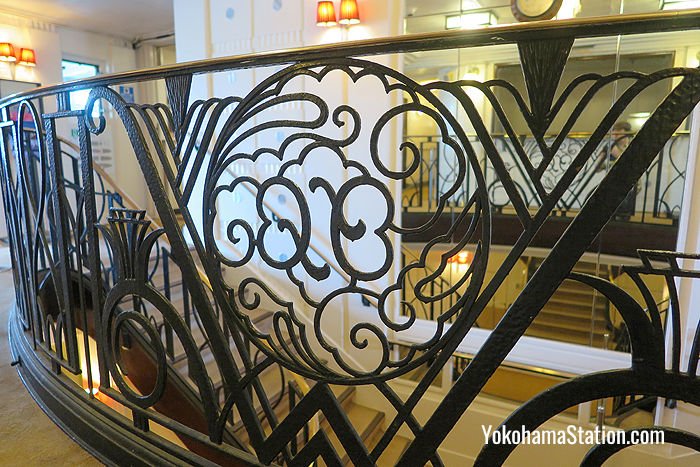
The yakumo motif on the central stairwell
The ship was named after the ancient Hikawa Shrine in Omiya ward, Saitama City. A stairwell between decks is decorated with a yakumo or “eight clouds” motif which represents Hikawa Shrine.
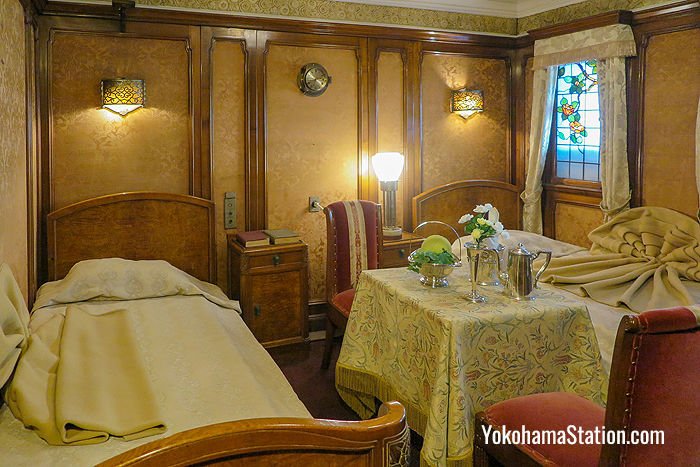
The Deluxe Cabin sleeping quarters
The Deluxe Cabin is a VIP suite that was used by both celebrities and royalty. Charlie Chaplin stayed in this suite during his 1932 trip.
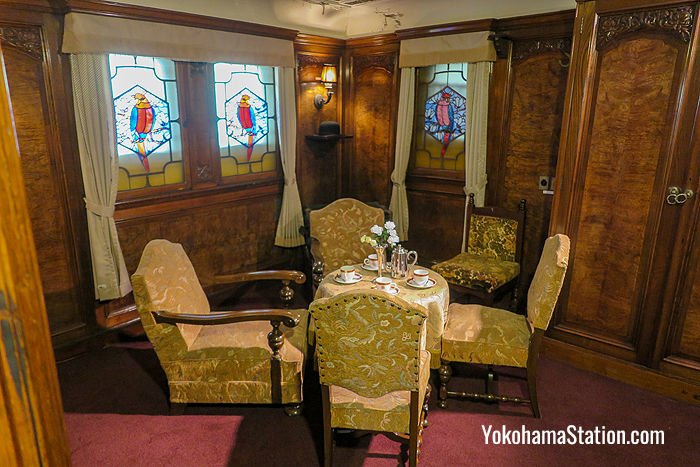
The Deluxe Cabin sitting room
Such spacious facilities form a striking contrast with the third class cabins which are located on a separate deck. There was no mixing between the classes during the journey.
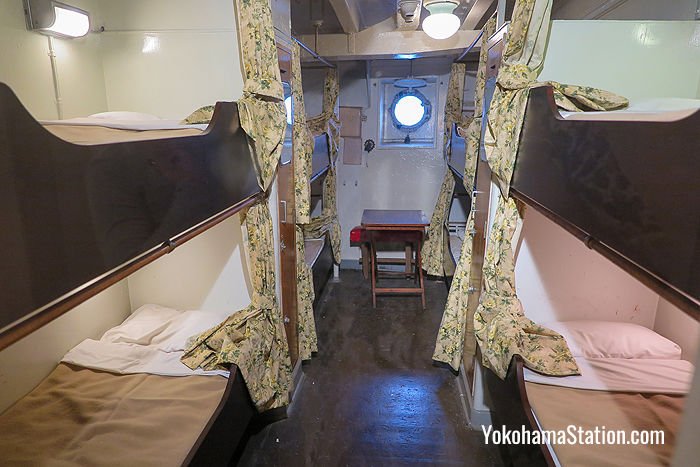
A third class cabin
The “Voyage to Seattle” exhibition area shows images and antique objects that bring to life the experience of a Pacific voyage in the 1930s. The trip took 13 days on a route that was infamous for its stormy seas!
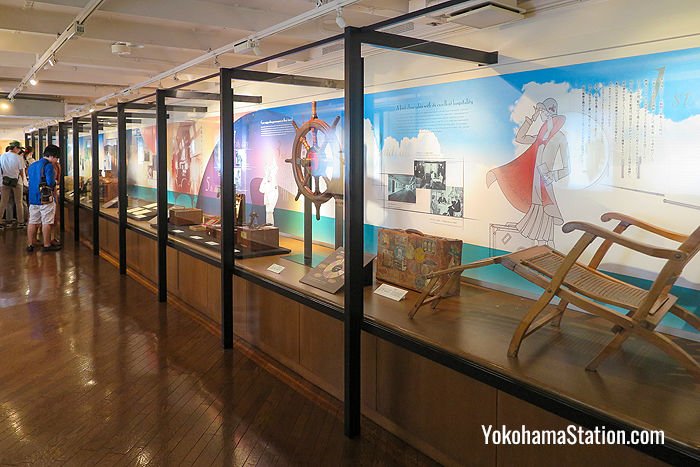
The “Voyage to Seattle” exhibition area
After arriving in Seattle passengers could transfer to the Great Northern Railway and take a 70 hour train journey to Chicago. In this way Seattle prospered as a major relay point between the Far East and the east coast of America.

The engine room
In addition to the passenger quarters, visitors can also view the ship’s engine room and the wheelhouse.
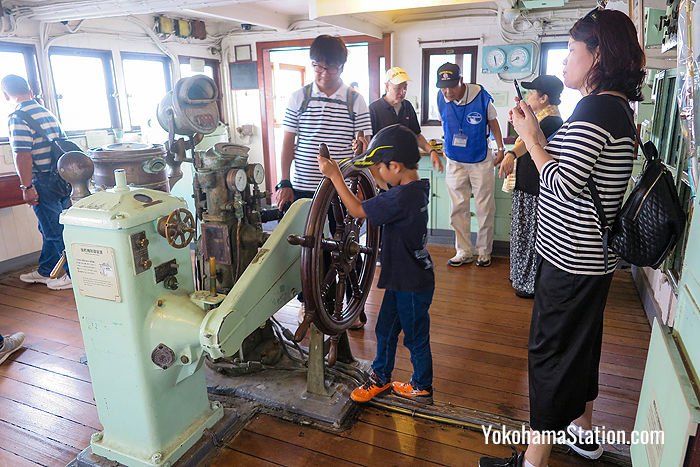
The wheelhouse
The wheelhouse would have been staffed 24 hours a day as it was the main headquarters of the ship.
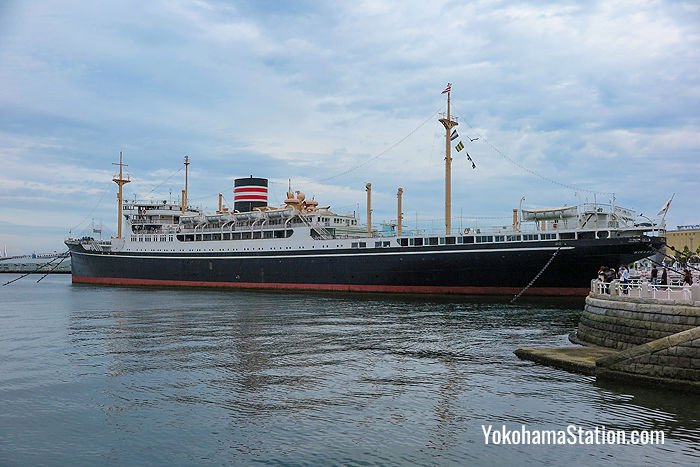
The Hikawa Maru at its final mooring beside Yamashita Park
Location
The Hikawa Maru is a 5 minute walk from Motomachi-Chukagai Station on the Minatomirai Subway Line. It is a 15 minute walk from Ishikawacho Station on JR East’s Negishi Line.
Opening Hours: 9.00 – 17.00 (Last entry 16.30)
Closed on Mondays (unless Monday is a national holiday in which case it will close the following day instead)
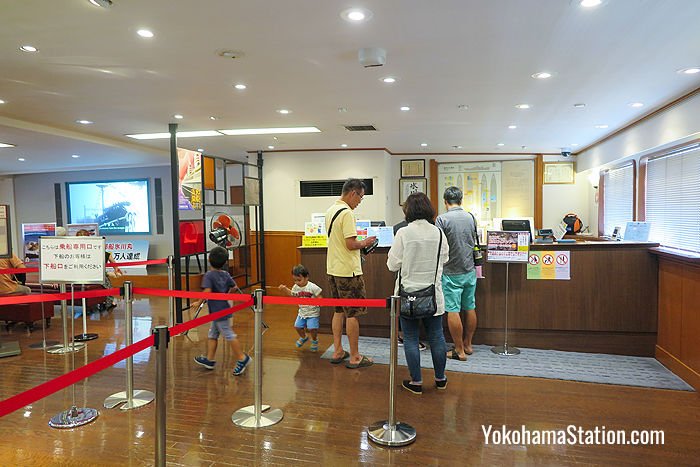
The ticket office
Admission Fees:
Adults: 300 yen
Seniors (65+): 200 yen
Elementary – Senior High Students: 100 yen
Combination tickets are also available which include both this ship and the NYK Maritime Museum.
Combination Ticket fees:
Adults: 500 yen
Seniors: 300 yen
Junior & Senior High Students: 300 yen
Elementary school students can enter the NYK Maritime Museum for free.
Article and original photos by Michael Lambe. All rights reserved.
